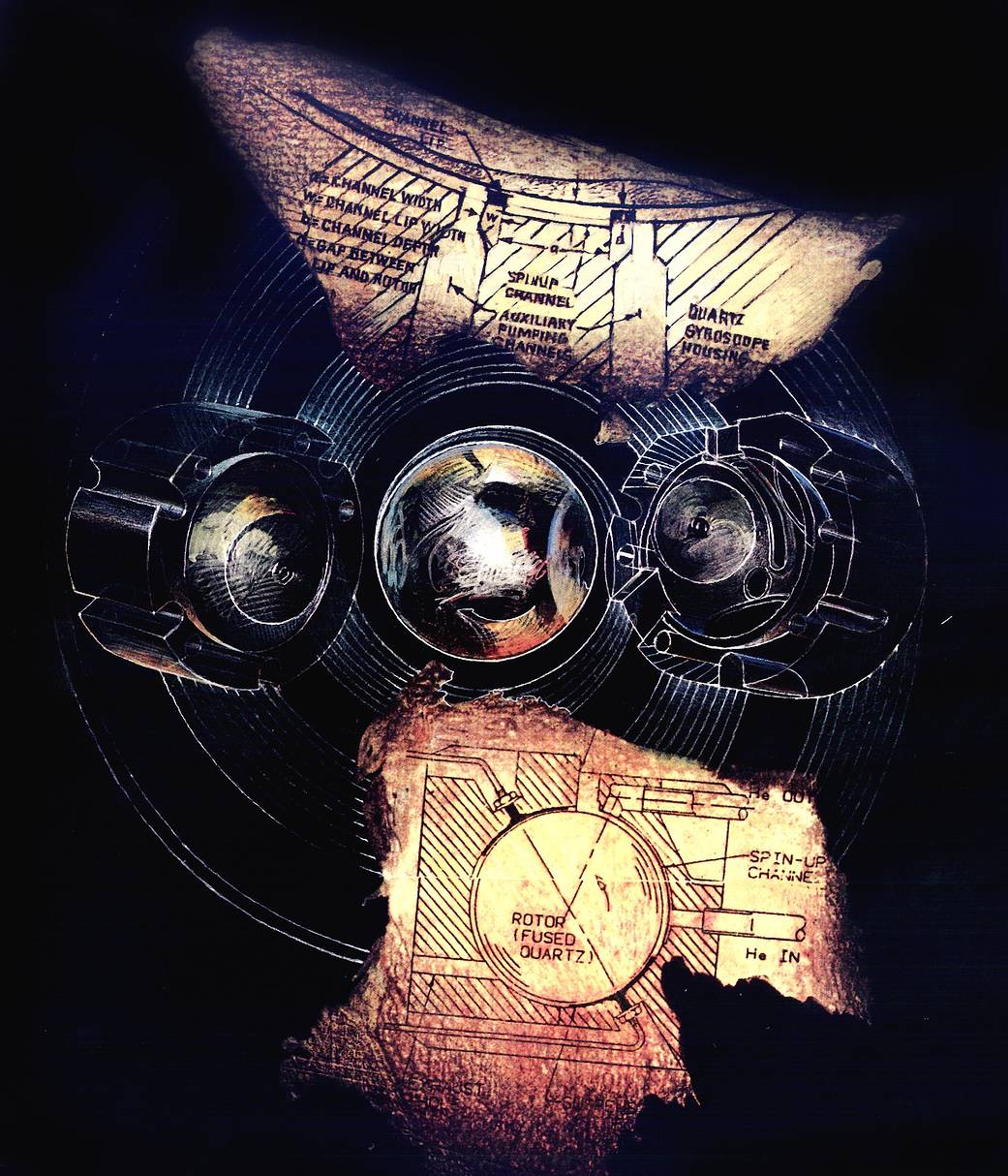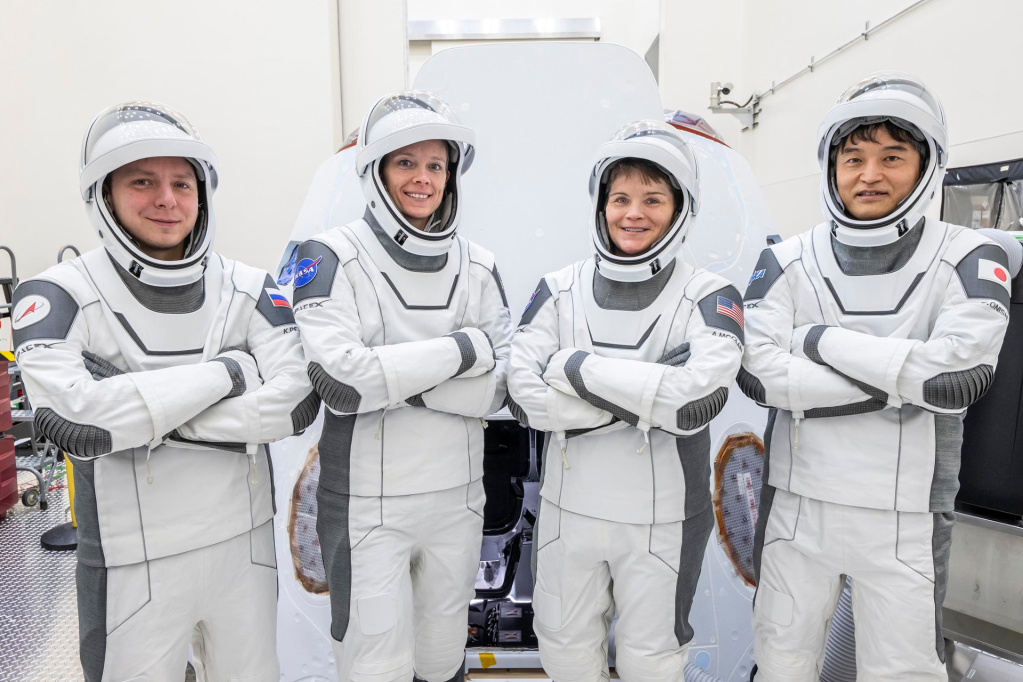
Critical to Gravity Probe B were four gyroscopes consisting of spinning spheres of solid fused quartz encased within a quartz housing. The four ping-pong sized rotors required exacting standards of homogeneity (inherent uniformity with minute density variations) as well as mechanical and electrical sphericity. Mechanically, the niobium-coated rotors were within 40 atomic layers (0.3 millionth of an inch) of a perfect sphere. These requirements called for both new manufacturing and measurement techniques. On orbit, spin-up of the rotors was accomplished by pumping a stream of helium gas past them in an intricately machined channel at nearly the speed of sound. Once spinning, the gas was pumped out of the housing creating a vacuum with a pressure lower than the space surrounding the orbiting spacecraft.
Image credit: Stanford University/Barron Storey

























